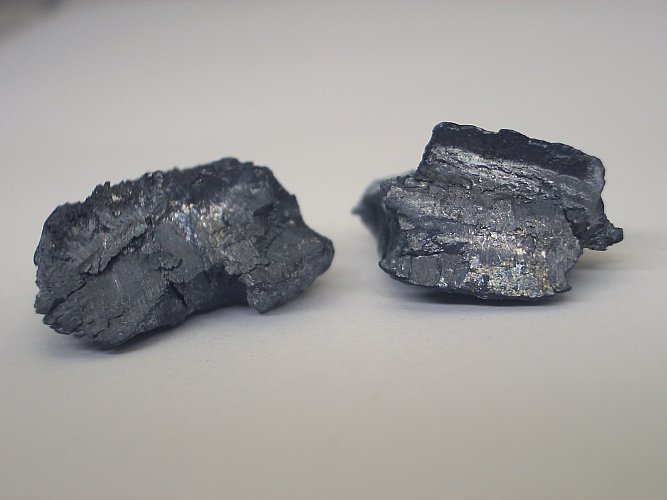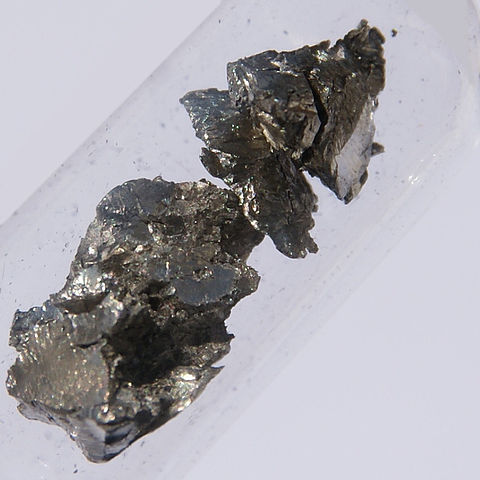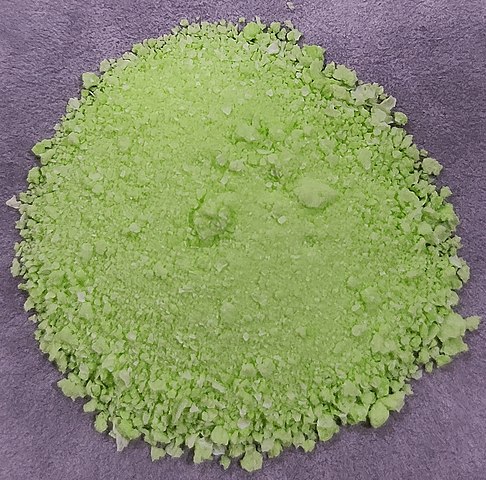Praseodymium is a rare earth element (REE), which are important mineral used in a variety of industries. With its distinctive pale green color, praseodymium is one of the most abundant REEs found in the Earth’s crust.
This article explores the properties, sources, uses, and health and environmental impacts of praseodymium.
We will also look at its history and discovery, as well as summarize the advantages and disadvantages of this material.
Introduction
Praseodymium is classed as an REE due to its unique atomic structure and chemical properties. REEs are a group of 17 chemical elements, which are spread across the periodic table. The elements are all metals with similar physical and chemical characteristics, and the majority of them are found in the Earth’s crust.
Praseodymium is found in several minerals, including monazite, bastnasite, and xenotime. It also forms compounds with other elements, including cerium, neodymium, lanthanum, and samarium.
When it comes to physical properties, praseodymium is a soft, silver-grey metal. It has a relatively low melting point (1122°C) and boiling point (3127°C). The metal has a low density of 6.77g/cm3 and is highly ductile, which means it can be easily drawn into wires. Praseodymium is also slightly magnetic and has a low electrical conductivity.
Praseodymium is found in two main sources: natural and artificial. Natural sources include the minerals monazite and bastnasite. These minerals contain a variety of rare earth elements, including praseodymium, which can be extracted using a process known as ion exchange. Artificial sources of praseodymium include nuclear fission and neutron capture.

Praseodymium is used in a variety of industrial and scientific applications. Industrially, it is used to produce yellow and red pigments for paints, ceramics, and glass. Praseodymium is also used in special alloys for aircraft engines, gas mantles, and as an additive to aluminum for casting. In the scientific field, it is used in neutron radiation detection equipment and in nuclear reactors.
In terms of health and environmental impacts, praseodymium is mainly considered to be non-toxic. However, it can be hazardous is ingested or inhaled, as it can cause irritation to the respiratory system. The element is also considered to have environmental impacts due to its potential to contaminate soil and water with its compounds.
Praseodymium was first discovered in 1885 by Austrian chemist Carl Auer von Welsbach. Von Welsbach was experimenting with a mineral called didymia, which he believed contained both neodymium and praseodymium. He was able to separate the two elements by a process of fractional crystallization and later discovered that they could be used to produce colors in glasses and ceramics.
In summary, praseodymium is a rare earth element that has numerous industrial and scientific uses. It has a low melting point and boiling point, is highly ductile, and is moderately magnetic. It can be found naturally in monazite and bastnasite, and artificially via nuclear fission and neutron capture.
While praseodymium is considered to be non-toxic, it has the potential to contaminate soil and water with its compounds. It was first discovered by Austrian chemist Carl Auer von Welsbach in 1885 and has since become an important component in many industries.
Properties
Praseodymium is a rare earth element that is comprised of several unique properties. It is a silvery metal that is soft and malleable, making it easy to shape. Praseodymium is also ductile, meaning it can be drawn into thin metal wires. It has a melting point of 935 degrees Celsius and a boiling point of 3,407 degrees Celsius.
When it comes to its chemical properties, praseodymium is considered to be highly reactive. It can easily form compounds with other elements like oxygen, nitrogen, sulfur, hydrogen, and chlorine. It readily forms metal oxides and hydroxides, which can be used for a variety of industrial applications.
Praseodymium also has several atomic properties that make it unique. Its atomic number is 59 and its atomic weight is 140.90765 grams per mole. It is classified as a lanthanide, a rare earth element on the periodic table, and has a valence of three.
In terms of its physical properties, praseodymium has a density of 6.769 grams per cubic centimeter and a hardness of 5.4 on the Mohs scale. It also has a very high electrical resistivity, which makes it an excellent electrical conductor.
Praseodymium is also highly magnetic, with a magnetic susceptibility of +2.3 x 10-6 cgs. This property makes it ideal for use in electronic components and other magnetic applications. In addition, it can also absorb gamma rays and X-rays.
Overall, praseodymium is a unique rare earth element that has several useful properties. Its malleability, reactivity, high electrical resistivity, and magnetic susceptibility make it a valuable resource in various industrial and scientific applications.
Sources
Praseodymium is a rare earth element, meaning it is not found in abundance. As such, it must be sourced and extracted from natural and artificial sources. To understand where praseodymium can be found, it is important to look into its sources.
Natural Sources
Praseodymium can be found naturally in minerals and rocks. Commercially, it is most often found in the minerals monazite and bastnasite. Monazite can contain up to 0.30% praseodymium, while bastnasite contains up to 8.7% of the rare earth element. As such, monazite and bastnasite are the primary sources of praseodymium.
In addition to monazite and bastnasite, praseodymium is also found in lesser concentrations in minerals such as apatite, allanite, xenotime, and eudialyte. These are significantly more difficult to extract the rare earth element from and are not economically viable for large-scale extraction.
Artificial Sources
Praseodymium can also be sourced artificially, through the processing of uranium and thorium ores. This is done by bombarding the ores with neutrons, which then split the nuclei and create radioactive isotopes of praseodymium. This method has become increasingly more common in recent years and is widely used to source praseodymium for industrial and scientific use.
In addition, praseodymium can also be recovered from waste materials, such as discarded fluorescent lamps. This material can be processed and recovered, which makes it an economical source of rare earth elements.
Finally, praseodymium can also be created synthetically through the irradiation of lighter elements, such as europium, gadolinium, and samarium. This process requires high levels of technology and skill and is thus not used for large-scale extraction.
Overall, praseodymium can be sourced from natural and artificial sources. The most common natural sources of praseodymium are monazite and bastnasite, while artificial sources include the processing of uranium and thorium ores, recovered waste material, and synthetic irradiation. Each of these methods has its own advantages and disadvantages, and is used for different applications.

Uses
Praseodymium, like many other rare earth elements, has a variety of uses in industrial, scientific, and technological applications. These uses are a result of its unique physical and chemical properties.
Industrial Uses
Praseodymium has use in a variety of industrial applications due in part to its low melting point and ability to form alloys with other metals. This makes it a great choice for use in the manufacturing of materials like aluminum alloys, steel alloys, and glass. It is also used in alloys for aircraft engines and nuclear reactor control rods. Additionally, it is used as a catalyst in the production of chlorine and other chemicals.
Scientific Uses
Praseodymium has many scientific applications. For example, it is used to create specialized lenses and mirrors for optical instruments, as well as in certain types of lasers. It is also used in scintillation counters, which measure radiation levels. Additionally, it is used in some medical imaging devices that need specialized lenses and mirrors.
Praseodymium also has use in spectroscopy, which is the science of light and its interactions with matter. This is because praseodymium has an intense visible emission when excited by light. This allows it to be used in both qualitative and quantitative analysis.
Praseodymium also has a number of other applications in science. It is used in the production of high-temperature superconductors, and in the making of wires for high-temperature thermometers. It is used in thermoelectric materials, and in catalytic converters. Finally, it is used as a dopant in certain materials to increase their electrical conductivity.
Praseodymium is an important and versatile rare earth element with many uses in industry, science, and technology. Its physical and chemical properties make it a great choice for a variety of applications, from its use in alloys and catalysts to its use in optical instruments and spectroscopy. It is a key component in many industrial, scientific, and technological processes, and its importance is only growing.
History and Discovery
The discovery of praseodymium dates back to 1885, when Carl Auer von Welsbach, an Austrian chemist, separated the element from a sample of the mineral cerite. Welsbach had obtained the mineral sample from a mine near Haverlah, Norway. He then used a fractional crystallization method to separate the element praseodymium. This element was then named “praseodymium” in Greek, which means “green twin”.
In 1923, two chemists, Frank H. Spedding and Charles James of Iowa State University, proposed the name “praseodymium” for the element. This proposal was accepted by the International Union of Pure and Applied Chemistry in 1925.
Since then, the element has been studied extensively, with new information being revealed about its properties and uses. Researchers have discovered that praseodymium is a member of the lanthanide series of elements. It has one of the highest melting points of any of the rare earth elements, at 935°C (1715°F). In addition, it has the highest electrical resistance among the rare earth elements.
Praseodymium has also been found to have a number of unique properties. It is magnetically soft, meaning that it can be easily magnetized and demagnetized. It is also a very good absorber of gamma rays and X-rays, making it useful in radiation protection.
Historically, praseodymium has been used in a variety of applications. It is a key component of certain glasses and enamels, which give the color green when heated. It is also used in green phosphors, which are used in fluorescent lamps and cathode ray tubes. Praseodymium is also used in welding rods, magnets, and certain alloys.
Praseodymium has also been used in scientific research. It is used in nuclear reactors to help control the chain reaction of fission. It is also used in some lasers, as well as in lasers used for medical treatments.
In more recent years, praseodymium has become more widely available due to the development of methods to extract it from mixtures of other rare earth elements. Praseodymium is now more widely available, making it easier to use in a variety of applications.

Praseodymium(III) hydroxide
Facts
Praseodymium is a chemical element with the symbol Pr
Its atomic number is 59
Praseodymium is the third member of the lanthanide series
It is a soft, silvery, malleable and ductile metal
Praseodymium is considered one of the rare-earth metals
It is the sixth-most abundant rare-earth element
Praseodymium gets it name from the Greek words prasios, which means “green”, and didymos, which means “twin”
Praseodymium metal tarnishes slowly in air, forming a spalling green oxide layer like iron rust
Praseodymium has only one stable and naturally occurring isotope
Praseodymium was initially discovered by Carl Gustav Mosander of Sweden in 1841.
Austrian chemist Carl von Welsbach separated didymium into praseodymium and neodymium.
Praseodymium makes up to 9.2 mg/kg of the Earth’s crust.
Praseodymium can be found in a variety of minerals
Larger quantities of the element are found in monazite and bastnasite.
Praseodymium serves no known biological function.
Praseodymium’s chief commercial use was as a yellow stain for glass and ceramic making
It makes up only about one part per trillion concentrated in seawater
Data
| Praseodymium | ||||||||||||||||||||||||||||
|---|---|---|---|---|---|---|---|---|---|---|---|---|---|---|---|---|---|---|---|---|---|---|---|---|---|---|---|---|
| Pronunciation | PRAY-zee-ə-DIM-ee-əm | |||||||||||||||||||||||||||
| Appearance | grayish white | |||||||||||||||||||||||||||
| Standard atomic weight Ar°(Pr) | ||||||||||||||||||||||||||||
|
||||||||||||||||||||||||||||
| Praseodymium in the periodic table | ||||||||||||||||||||||||||||
| Atomic number (Z) | 59 | |||||||||||||||||||||||||||
| Group | f-block groups (no number) | |||||||||||||||||||||||||||
| Period | period 6 | |||||||||||||||||||||||||||
| Block | f-block | |||||||||||||||||||||||||||
| Electron configuration | [Xe] 4f3 6s2 | |||||||||||||||||||||||||||
| Electrons per shell | 2, 8, 18, 21, 8, 2 | |||||||||||||||||||||||||||
| Physical properties | ||||||||||||||||||||||||||||
| Phase at STP | solid | |||||||||||||||||||||||||||
| Melting point | 1208 K (935 °C, 1715 °F) | |||||||||||||||||||||||||||
| Boiling point | 3403 K (3130 °C, 5666 °F) | |||||||||||||||||||||||||||
| Density (near r.t.) | 6.77 g/cm3 | |||||||||||||||||||||||||||
| when liquid (at m.p.) | 6.50 g/cm3 | |||||||||||||||||||||||||||
| Heat of fusion | 6.89 kJ/mol | |||||||||||||||||||||||||||
| Heat of vaporization | 331 kJ/mol | |||||||||||||||||||||||||||
| Molar heat capacity | 27.20 J/(mol·K) | |||||||||||||||||||||||||||
Vapor pressure
|
||||||||||||||||||||||||||||
| Atomic properties | ||||||||||||||||||||||||||||
| Oxidation states | 0, +1, +2, +3, +4, +5 (a mildly basic oxide) | |||||||||||||||||||||||||||
| Electronegativity | Pauling scale: 1.13 | |||||||||||||||||||||||||||
| Ionization energies |
|
|||||||||||||||||||||||||||
| Atomic radius | empirical: 182 pm | |||||||||||||||||||||||||||
| Covalent radius | 203±7 pm | |||||||||||||||||||||||||||
| Other properties | ||||||||||||||||||||||||||||
| Natural occurrence | primordial | |||||||||||||||||||||||||||
| Crystal structure | double hexagonal close-packed (dhcp) | |||||||||||||||||||||||||||
| Speed of sound thin rod | 2280 m/s (at 20 °C) | |||||||||||||||||||||||||||
| Thermal expansion | α, poly: 6.7 µm/(m⋅K) (at r.t.) | |||||||||||||||||||||||||||
| Thermal conductivity | 12.5 W/(m⋅K) | |||||||||||||||||||||||||||
| Electrical resistivity | α, poly: 0.700 µΩ⋅m (at r.t.) | |||||||||||||||||||||||||||
| Magnetic ordering | paramagnetic | |||||||||||||||||||||||||||
| Molar magnetic susceptibility | +5010.0×10−6 cm3/mol (293 K) | |||||||||||||||||||||||||||
| Young’s modulus | α form: 37.3 GPa | |||||||||||||||||||||||||||
| Shear modulus | α form: 14.8 GPa | |||||||||||||||||||||||||||
| Bulk modulus | α form: 28.8 GPa | |||||||||||||||||||||||||||
| Poisson ratio | α form: 0.281 | |||||||||||||||||||||||||||
| Vickers hardness | 250–745 MPa | |||||||||||||||||||||||||||
| Brinell hardness | 250–640 MPa | |||||||||||||||||||||||||||
| CAS Number | 7440-10-0 | |||||||||||||||||||||||||||
| History | ||||||||||||||||||||||||||||
| Discovery | Carl Auer von Welsbach (1885) | |||||||||||||||||||||||||||
|
||||||||||||||||||||||||||||
